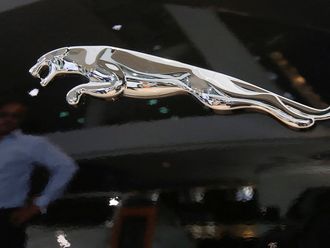Driving long-term loyalty and customer engagement is a key strategy in most businesses’ objectives, and a customer loyalty programme can play a big role in contributing to this. Especially when other elements of the buying decision, such as price and service levels, no longer provide a significant competitive difference.
So, how can a customer loyalty programme help your brand differentiate itself from the competition?
Choice in redemption to fuel loyalty
Of course, innovation and understanding from the loyalty programme provider regarding the options presented to the customer are absolutely key. With greater demands for relevance, they often need a partner with access to a rewards network that has the scale and depth to satisfy all member requirements.
While many travel brands already have a broad range of associated partners, a programme that offers true relevance and attainability for all of its members often now requires some third-party support.
The rise in mobile device usage is another area where choice plays an important role. As payments via mobiles rise, services like Apple Pay or Google Wallet are encouraging customers to use their phones in the same way they’ve previously used cash, debit/credit cards and also how they keep track of the programmes they have signed up for.
Again, it is differentiation — this time by payment choice and device — that is helping to keep customers locked in, but more crucially, keep them buying.
For example, the retailer Best Buy allows customers to earn points via tapping into its proprietary app whilst in-store and also offering mobile-exclusive deals to encourage downloads of the app. The app is then used to track points and redeem when needed — via mobile payments.
The retailer, previously focused on price-comparison, has now turned to mobile to differentiate but also offers in-store incentives. A great example of rewarding everyday spend and integrating a loyalty programme through both the online and offline world.
Going the extra mile for the customer
Loyalty programmes and choice are by no means just restricted to the retail industry. The travel industry has always played a major role in the origins and development of loyalty programmes, with early frequent flyer programmes dating back to the late 70s and early 80s with the likes of Texas International and American Airlines respectively.
Despite the travel industry being such an influencer and early adopter, it’s fair to say that many consumers would, from a top-line perspective, view a lot of today’s travel programmes as “quite similar” in terms of approach and value. With airlines competing on pricing, schedules and the customer experience, it’s amazing just how alike their frequent flyer programmes are.
Earn and burn (redemption) opportunities are often the same, with the same partners and broadly the same offers. Offering a wider choice of rewards is a key (and relatively simple) way a programme can differentiate itself from others.
Collinson Latitude’s recent study — Value of Redemption — revealed that more than 60 per cent of travel loyalty programme members actively look for more choice of reward options when selecting/joining a loyalty programme provider.
It also showed that members are more likely to continue spending with a brand, after they have redeemed points/miles on items that are out of the usual core redemption categories of flights, hotel stays and upgrades (77 per cent compared to 71 per cent), something often referred to as non-core inventory.
Specifically looking at the behaviour Collinson Latitude describes as ‘burning drives earning’, members have voiced their preference for more choice and programme providers can clearly see the value add. In short, the selection of an increased (but relevant) choice of rewards in a redemption programme, through the successful interpretation of data, results in happy loyalty members and happy participating brands.
Redemption to build the value proposition
Essentially, any loyalty programme needs to drive up the value proposition in the eyes of the customer. Whether that comes through greater choice of rewards, payment via mobile, customer exclusivity or to fulfil a need for convenience and choice.
Ultimately, it is differentiation in the offering, fuelled by clever data, which drives this forward. Choice, as we’ve seen from the real-life business examples discussed, is a key driver — empowering the customer to make the most of the loyalty programme. The mantra ‘spend more and thou shall be rewarded’ springs to mind.
In the eyes of the customer, a loyalty programme needs to add value to the base expectation and be a part of a positive, attainable user experience. This value proposition is far greater an attraction than anything that can be filtered on price.
It’s an approach that from a long term business perspective can fuel sustainable growth through loyalty and value generation (or similar). This can be strengthened further by giving the customer the choice they crave, to redeem on the rewards they want, enabling an anytime, anywhere shopping experience — that is rooted in customer data and insight at its very core.
The writer is Commercial Product Manager, Collinson Latitude.












